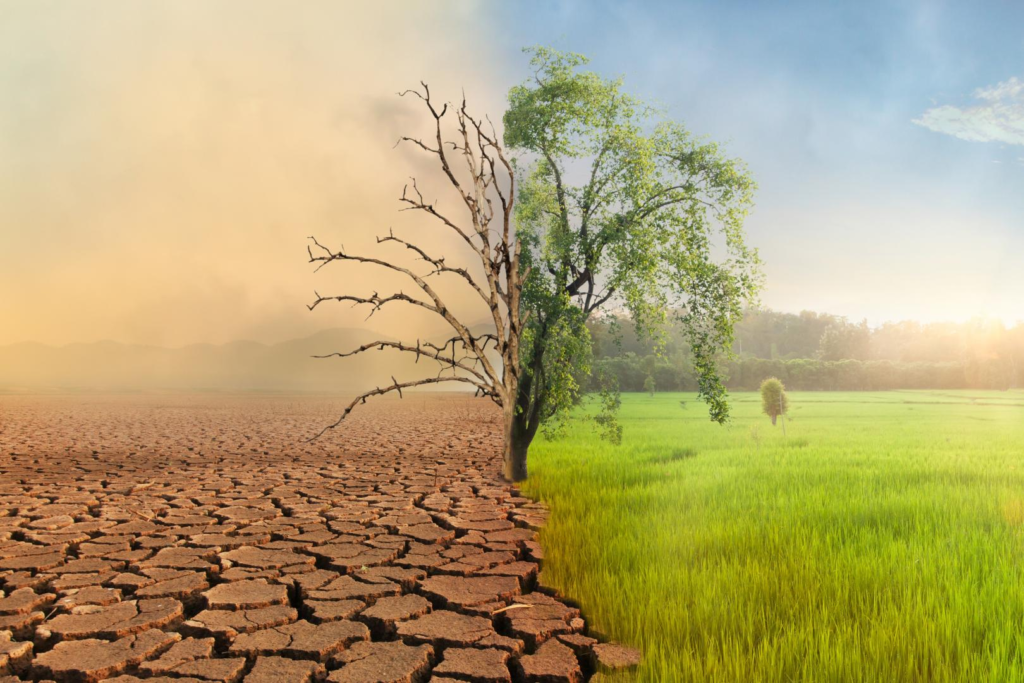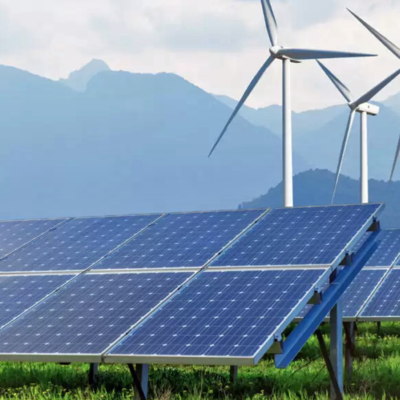The climate change impact on American agriculture is becoming more serious each year. Farmers across the United States are facing new challenges due to rising temperatures, unpredictable weather, and shifting seasons. These changes affect not only crops and livestock but also the economy and the food supply. This article explores how climate change is changing American farming, what challenges are being faced, and what is being done to adapt.
How Climate Change is Affecting U.S. Farming
Farmers today are dealing with more extreme weather than ever before. In many regions, growing seasons are becoming longer, but that doesn’t always mean more food or profit. Hotter days, sudden storms, and longer dry periods are creating uncertainty in fields and barns.
Rising Temperatures
Heatwaves are becoming more common in key farming states like Iowa, Nebraska, and California. When temperatures rise above normal levels during the growing season, crops like corn and soybeans can suffer. High heat, especially during flowering or pollination, reduces yields. In livestock, hot weather affects animal health and lowers productivity. For example, dairy cows produce less milk during heat stress.
Changes in Rainfall
Rainfall patterns are shifting. In some areas, too much rain falls at once, leading to flooding and soil erosion. In other regions, long dry spells are drying out the land. Crops that rely on a steady water supply struggle to grow in these conditions. Droughts in states like California, Texas, and the Midwest have forced many farmers to change how and what they grow.
Shifting Seasons
Spring often arrives earlier and winters are less predictable. These changes can confuse plants and animals that rely on steady seasonal cues. Fruit trees may bloom too early and be damaged by late frosts. Pests and diseases also survive longer and spread more widely, harming both crops and animals.
Impacts on Crops and Livestock
Crop Production
Different crops are being affected in different ways. Corn, a major U.S. crop, is sensitive to heat during pollination. Just a few days of extreme heat can lower harvests. Soybeans face similar risks. Wheat, often grown in drier regions, struggles during long droughts or sudden temperature swings.
Fruit and vegetable farmers are also facing challenges. Apples, berries, tomatoes, and grapes depend on stable weather patterns. If frost comes too late or heat arrives too early, entire harvests can be lost. Specialty crops like almonds and wine grapes, which are important to states like California, need very specific conditions to thrive.
Livestock
Animals are also affected. Cattle, pigs, and chickens can suffer from heat stress. This lowers their growth rate, affects reproduction, and increases the need for shade, water, and cooling systems. In dry years, pastures may not grow enough grass, forcing farmers to buy expensive feed. Water shortages also make it harder to care for animals properly.

The Ripple Effect: Economy and Communities
The effects of climate change on farming go beyond the fields. They affect food prices, jobs, and even the shape of rural communities.
When farms produce less, food can become more expensive. Shortages in crops like corn and wheat can lead to higher prices in the grocery store. These price changes can affect families across the country, especially those with tight budgets.
Farming towns also feel the pressure. When harvests are small or animals are lost, farmers have less money to spend in their communities. This impacts local stores, schools, and services. In some areas, people may choose to move away, leading to smaller, older populations in rural regions.
How Farmers Are Adapting
American farmers are known for their ability to adjust and innovate. Across the country, they are finding new ways to work with the changing climate.
Water and Soil Management
To deal with changing rainfall and drought, farmers are using methods that protect water and soil. Some of these include:
- Using cover crops to protect soil from erosion and keep moisture in the ground
- Switching to no-till or low-till farming to reduce disruption of the soil
- Installing drip irrigation systems to use water more efficiently
- Collecting and storing rainwater during wet seasons for use in dry times
Changing What and How They Grow
Farmers are also choosing crops that can handle new weather patterns. Some are planting heat-tolerant varieties of corn or soybeans. Others are switching to crops that need less water or are more resistant to disease and pests.
Raising different types of crops or animals on the same farm, called diversification, helps farmers spread out risk. If one crop fails, another might still succeed.
Using Technology
Technology is playing a big role in helping farmers adapt. Tools like sensors, drones, and satellite maps allow farmers to see what’s happening in their fields in real time. They can spot problems early and make better decisions about when to plant, water, or harvest.
Better weather forecasts also help. Knowing when a storm is coming or how hot the week will be helps farmers plan ahead.
Long-Term Solutions
While many farmers are adapting to current challenges, long-term solutions are needed to reduce future risks.
One way is to reduce greenhouse gas emissions from farming itself. This includes:
- Managing livestock waste to lower methane emissions
- Using fertilizers more carefully to avoid releasing nitrous oxide
- Planting trees and cover crops to store more carbon in the soil
Government programs can help by offering support and funding for climate-smart farming practices. Research centers and universities are also working on new seed varieties and farming methods designed for future climates.
Infrastructure improvements, such as better roads, irrigation systems, and storage facilities, can also help farmers stay productive even in tough conditions.
What You Can Do
You don’t have to be a farmer to help with the climate change impact on American agriculture. Everyone has a role to play.
- Support local farmers by buying from farmers markets or joining a community-supported agriculture (CSA) program
- Reduce food waste by planning meals and storing food properly
- Stay informed and support policies that help protect the environment and support rural communities
Small actions can have a big effect when it comes to building a more sustainable food system.
Conclusion
The climate change impact on American agriculture is clear and growing. Farmers face new and unpredictable weather patterns that threaten crops, livestock, and rural life. But with innovation, hard work, and support, American agriculture is finding ways to adapt and build resilience.
Understanding these challenges helps all of us make smarter choices—whether it’s supporting local food, reducing waste, or backing smart climate policies. Farming has always been about working with nature. As the climate changes, that partnership becomes more important than ever.
Do Follow USA Glory On Instagram
Read Next – Okta Subscription Backlog Growth Helps Earnings and Outlook






